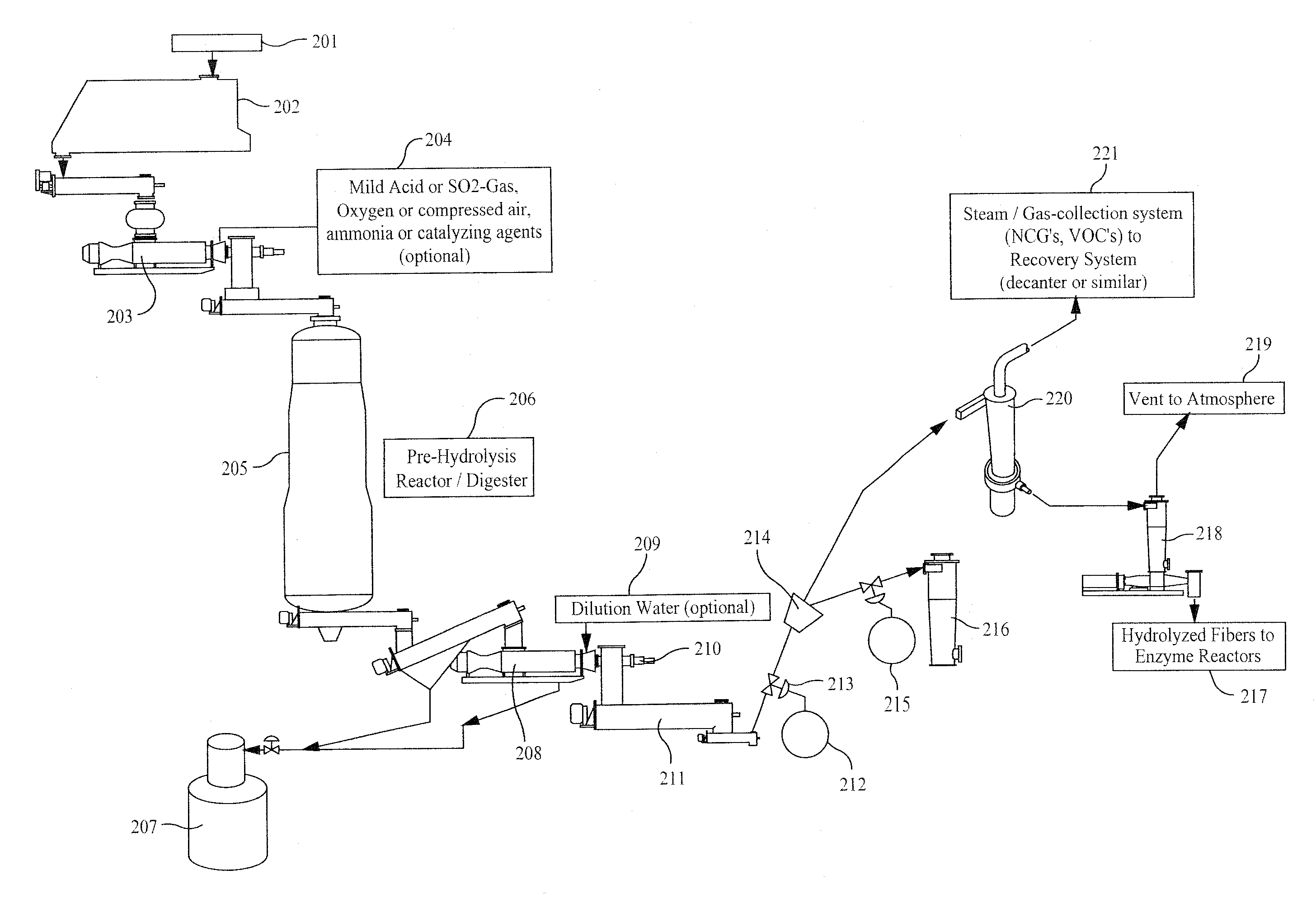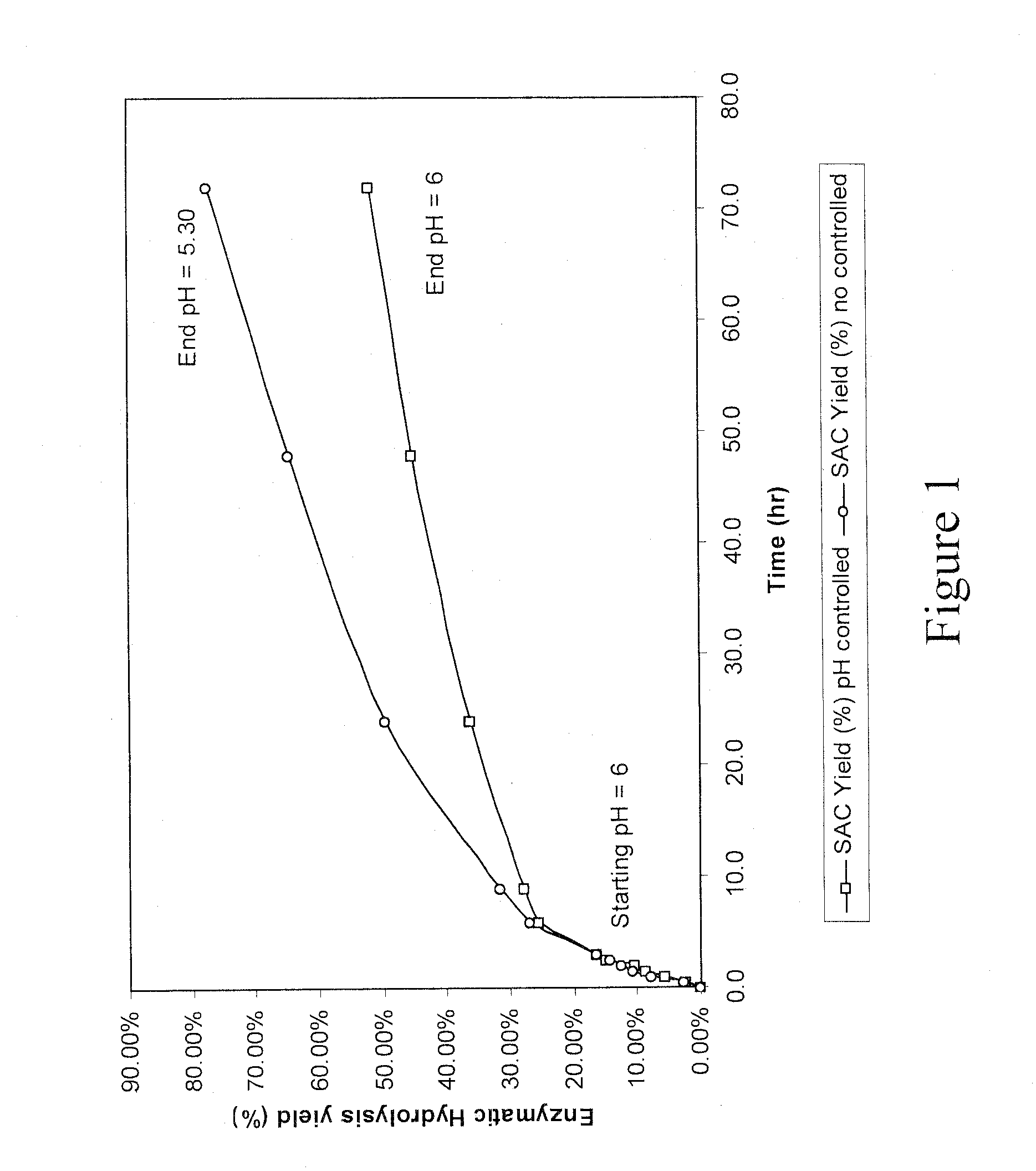Enzymatic hydrolysis of pre-treated biomass
a technology of pre-treated biomass and enzymatic hydrolysis, which is applied in the direction of fertilization, etc., can solve the problem of unexpected differences in the optimal ph of cellulases, and achieve the effect of increasing process efficiency and considerable yield differences
- Summary
- Abstract
- Description
- Claims
- Application Information
AI Technical Summary
Benefits of technology
Problems solved by technology
Method used
Image
Examples
Embodiment Construction
[0038]PITC (Andritz's Pruyn's Island Technical Center) enzymatic evaluations of different pretreated materials have shown that high consistency saccharification perform differently than low consistency enzymatic hydrolysis. In fact a reduction of about 30% in saccharification is observed in the former. One of the explanations is based on the fact that at high consistency end product inhibition would reduce the effectiveness of the enzymes (1). Others indicated the presence of higher concentration of degradation products that are liquefied and hence posing an inhibitory effect on the enzyme performance at higher consistencies (1). To eliminate end product inhibition during experimentation is use low consistency enzymatic hydrolysis (1). Another way to eliminate this inhibition is by the use of SSF (simultaneous saccharification and fermentation) where this is reduced considerably by concomitant consumption of end product by yeast (in the case of glucose). Large scale low consistency ...
PUM
| Property | Measurement | Unit |
|---|---|---|
| pH | aaaaa | aaaaa |
| pH | aaaaa | aaaaa |
| time | aaaaa | aaaaa |
Abstract
Description
Claims
Application Information
 Login to View More
Login to View More - R&D
- Intellectual Property
- Life Sciences
- Materials
- Tech Scout
- Unparalleled Data Quality
- Higher Quality Content
- 60% Fewer Hallucinations
Browse by: Latest US Patents, China's latest patents, Technical Efficacy Thesaurus, Application Domain, Technology Topic, Popular Technical Reports.
© 2025 PatSnap. All rights reserved.Legal|Privacy policy|Modern Slavery Act Transparency Statement|Sitemap|About US| Contact US: help@patsnap.com



